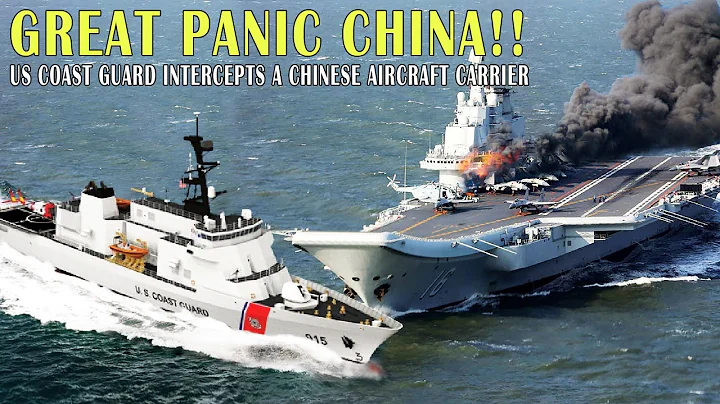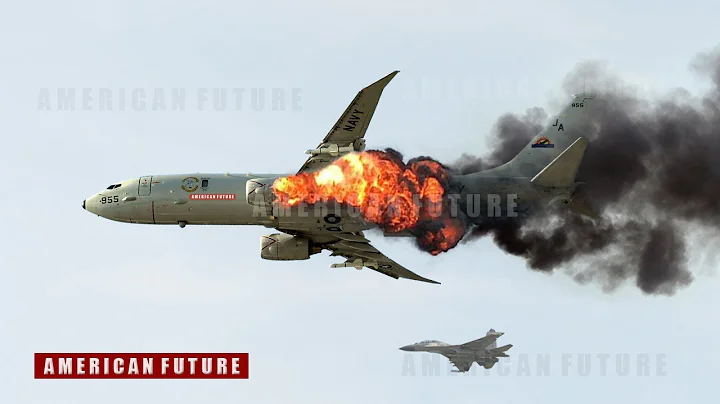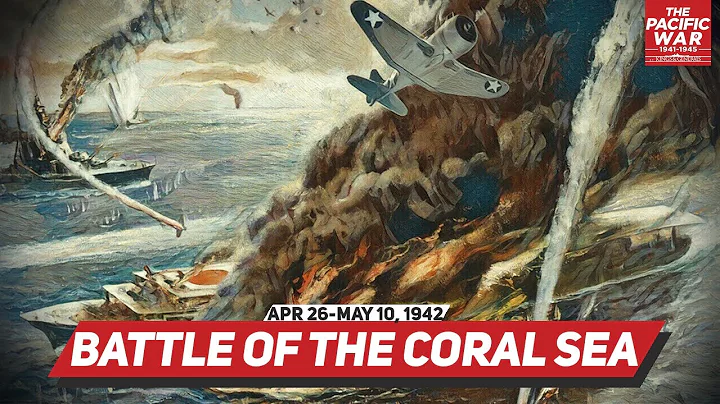As the United States returns to the Asia-Pacific and continues to put pressure on China, the United States uses the so-called "free navigation/flight" as an excuse to continuously dispatch ships and aircraft on China's surrounding coasts for close reconnaissance and provocation. It is no longer sneaky and occurs almost every month. many times. On June 24, a P-8A anti-submarine patrol aircraft of the US military flew directly through the Taiwan Strait . At the same time, it also publicly hyped this behavior in a high-profile manner. According to the United States, the Taiwan Strait is "international waters" and navigation and overflight here are subject to protection under international law.
China replied to this that there is no such thing as "international waters" in international law. At the same time, it will monitor and monitor the deployment of air power throughout the entire process, so in the context of such unreasonable provocation by the United States. Whether it can be shot down directly or intercepted in the air in a more tough way, we will use two cases to explain from the shooting down of B29 to the collision of and in the South China Sea. It is indeed increasingly difficult to shoot down the US reconnaissance aircraft after half a century.

P-8A anti-submarine patrol aircraft

J-16 intercepted P-8
In 1952, the first strike of homeland air defense, Yangtze River Estuary shot down B-29 strategic bomber
The Chinese Air Force was established relatively late, and compared with the world's aviation powers, it completely started from scratch. At first, the starting point for the aviation industry assistance based on the Soviet system was quite high. They skipped the propellers and entered the jet age. Just as the War to Resist US Aggression and Aid Korea broke out, they began to build while fighting. However, the aviation industry is not building bicycles after all. No matter how much assistance is provided, it will take time to digest. From technology to equipment scale, it will take a long process. Therefore, the early territorial air defense force was still weak. Since 1950, as China and the United States fought in North Korea, the United States began to use various aircraft to perform reconnaissance missions along the Chinese coast. It has even continued to invade the airspace, intruding the Shandong Peninsula, East China coast, Shanghai and other areas, posing a great threat to territorial integrity and people's life safety.
During this period, the U.S. military was the strongest in the world, and it completely ignored the weak Chinese Air Force. It often dispatched reconnaissance planes to invade the airspace, and even opened fire and bombed. Of course, after getting used to arrogance, you will always miss. At 5:36 on September 20, 1952, the Shanghai Air Defense Warning Radar Station discovered a B-29 strategic bomber 133 kilometers southeast of Shanghai. The US aircraft was flying at an altitude of 1,500 meters. Target Shanghai. The relatively safe flight altitude of the B-29 strategic bomber is 4,000 meters, but the US plane actually invaded the airspace at an "ultra-low altitude" of 1,500 meters, and it was dispatched alone without even basic escort fighters. This shows how flamboyant and contemptuous it is. Young Chinese Air Force.

B-29 strategic bomber

Low-altitude flying B-29 strategic bomber
As the Korean War is still ongoing, the United States is still clamoring for nuclear blackmail with atomic bombs. For this strategic bomber that once dropped the atomic bomb, China Of course, the Air Force cannot take this seriously. Two MiG-15s of the 2nd Air Division were ordered to take off to intercept. Under the command and guidance of the ground radar , the two-aircraft formation quickly found the target over Chenjia Town, Chongming Island. The distance between the two sides was only 4 kilometers and they had entered a close combat. After seeing the MiG-15, the B-29 did not turn around and run away normally, but chose to actively fire at the MiG-15. The propeller-type strategic bomber attacked the jet fighter . The US military was a little crazy and always thought that the Chinese Air Force did not dare. Fire at yourself.
Faced with such an arrogant B-29 bomber , the MiG-15 twin aircraft immediately moved behind the US aircraft, occupied a favorable position and launched an attack. Due to the sudden distance between the two sides when the incident occurred, and the US aircraft's speed was only 380-420 kilometers per hour, the speed difference between the two sides was too large. 's lead aircraft He Zhongdao overran before he could take aim. 's wingman Li Yongnian immediately aimed and opened fire upon seeing this. Under the strafing fire of the powerful 237mm cannon of the MiG fighter, the B-29 bomber was hit by a bullet in the buttocks and was damaged. When it saw the Chinese coming for real, it hurriedly descended and turned left in an attempt to escape. The lead aircraft, which came back in a circle, was located just above and to the right of the enemy aircraft. It aimed and fired a volley of cannons. The two sides were close to each other and the middle part of the B-29's fuselage took a lot of shells. In addition, the wingman's engine also took a few hits.

MiG-15 fighter

Attack information
B-29 is indeed rough and thick-skinned. It has not crashed after taking so many shells. It is also capable of counterattack with firepower, and even the lead MiG aircraft was injured. However, no matter how hard it was, it was still the target of attack. The MiG-15 chased it all the way from 1,500 meters to 200 meters, and chased it to 70 kilometers away from the coastline. The distance between the two sides narrowed to 800 meters, and the two MiG-15s found the right time to aim and launch. The B-29 finally couldn't hold on and turned over and fell into the sea. The lead aircraft was slightly injured by one bullet (the wing was shot), but the wingman was unscathed. The two-aircraft formation quickly returned to Jiangwan Airport safely. The entire aerial pursuit and annihilation battle lasted 5 minutes. In the end, 4 of the 14 crew members of the B-29 strategic bomber were killed and the rest were captured.
This is also the first time since the People's Liberation Army Air Force has independently assumed the task of homeland air defense, it has shot down an invading US aircraft in the domestic airspace, severely damaging the opponent's arrogance with practical actions. Although the United States protested this, the thief who shouted "Catch the thief" has invaded our country's airspace. In the face of irrefutable evidence, it could only shut up obediently. It lost a B-29 strategic bomber and even hit the crew. The Americans never expected that the Chinese Air Force would be so powerful. In the following decades, there were many air battles between China and the United States in the field of homeland air defense. Although the performance gap between the two sides' fighter aircraft was relatively large, countless American aircraft were produced based on the backward J-5\6. This is the best result of those who dare to show their swords. .

Attack reference material

B-29 strategic bomber
In 2001, the South China Sea plane collided, and the US military even considered dispatching an aircraft carrier to recapture the detained aircraft
On April 1, 2001, the China-US plane collision in the South China Sea made the navy and air force extremely aggrieved, especially the two sets of digital poles. Insulting. 81192 and 34567.89, the former is the number of the J-8II that unfortunately crashed, and the latter is the amount of compensation deliberately paid by the United States. The two sides are not equal in strength. Although they know that the other side did it deliberately, they can only choose to tolerate it.

The incident of the plane collision in the South China Sea
The incident was very simple. On that day, a US military EP-3 electronic reconnaissance aircraft performed a reconnaissance mission near Hainan. Originally, everyone was familiar with this kind of reconnaissance and interception behavior. But this time the U.S. military wanted to find something to do. As the two J-8IIs flying away from it, the U.S. aircraft suddenly turned and crashed into an accompanying J-8II due to its large body and slow flight speed. As a result, this aircraft was barely The tail of the fighter plane flying at low speed was injured, it lost control and crashed into the sea, killing everyone. The EP-3 electronic reconnaissance aircraft that was responsible for the incident had its propeller and nose partially damaged. Without our permission, it directly broke into the airspace and made an emergency landing at Hainan Lingshui Airport. The aircraft and 24 crew members were reasonably detained.
Beat someone and then go to their home to cheat, and then ask the other party to send the plane and crew back. This is the hegemonic logic of the United States and it will never be wrong anyway. The United States had an arrogant attitude and refused to apologize. It first used the excuse of "monitoring the development of the situation" and then dispatched the destroyer and to the South China Sea on the second day of the incident to deter it with force. The top US military officials even advocated dispatching the aircraft carrier battle group to attack Hainan and recapture the detained aircraft and crew members. Compared with the strength of the Chinese and US military at the time, the odds of winning were quite high. Due to the superior strength of the United States and our limited means of counterattack, the negotiation process between the two parties changed six times, and finally ended with a rather vague "apology letter" from the Americans and an extremely insulting compensation amount of 34,567.89.

South China Sea aircraft collision

Disassembled EP-3 reconnaissance aircraft
The American RAND Corporation later conducted a simulation exercise on this, assuming that China shot down a US military reconnaissance aircraft provoking in the South China Sea, and the US military dispatched an aircraft carrier strike group into the South China Sea to retaliate. In response, China also dispatched naval and air forces for a confrontation, and a large-scale military conflict broke out between the two sides. The distance from Lingshui Airport to the Paracel Islands is 340 kilometers, and to the Nansha Islands is more than 1,000 kilometers. If the time happened in 1996, the main naval and air forces of the People's Liberation Army at that time were J-7 and J-8. The 24 Su-27s could only be used in key areas. With the combat radius of the previous two models of 600-800 kilometers, It can only stay briefly in the Xisha sea area and cannot meet actual combat use.The U.S. military can gain air superiority with its carrier-based aircraft. In addition, the air defense and anti-submarine capabilities are too weak. The U.S. aircraft carrier battle group can launch attacks outside the defense zone and easily influence the situation in the South China Sea.
If we take 2010 as an example, the equipment level of the People's Liberation Army has greatly improved. Hundreds of third-generation aircraft such as Su-27 and J-11 have been equipped, and air-launched ship-based anti-ship means are also relatively abundant. If it already has high combat effectiveness in the inland and offshore areas, but it is still not enough in the relatively distant South China Sea, the US military's B-2 stealth bombers and stand-off long-range missiles have the advantage of being able to easily launch attacks at any time.

J-7E fighter aircraft

J-8II fighter aircraft
For example, in the actual combat stage, the US military will use "Tomahawk" cruise missiles to attack airports near the South China Sea, and use B-2, B-1B and even B-52 strategic bombers to launch precision strikes outside the defense zone to prevent It is estimated that more than 30% of the airports will be destroyed in the first week of the war. Correspondingly, although the Su-27 has a combat radius of more than 1,000 kilometers, and the Su-30MKK and JH-7 have a combat radius of 1,300 kilometers, under the dual guarantee of air defense and air superiority of at least two US aircraft carrier formations, the Su-27 series from afar Not much of an advantage.

J-7 fighter jets

J-11 fighter jets
Conclusion
Since the 1950s, the United States and its allies have frequently visited China’s coast for reconnaissance. This has long been nothing unusual. In the process of homeland air defense for more than half a century, the Navy, Air Force and various types of U.S. military aircraft engaged in long-term confrontations. Before the 1970s, there was basically no warning, and invading enemy aircraft were shot down directly. However, after entering the 1990s, attacks cannot be carried out casually. International interception and disposal procedures must be followed. First, warnings must be issued to drive them away. If they encounter a thick-skinned person looking for trouble, they must conduct a mobile interception. If you still don't know what's going on, then it is possible to turn on the fire control radar to illuminate the target, forcing the opponent to evacuate, otherwise something big will happen.
We refer to the practices of the United States and its allies in recent years. In addition to continuing to strengthen military activities along China's coast, the United States also requires Japan, Australia and Canada to jointly act to build an alliance to comprehensively pressure China. In particular, Canada and Australia, which are thousands of miles away, are very active and even more reckless than the United States when approaching for close reconnaissance. The Australian P-8A reconnaissance aircraft that was sprayed with infrared jamming bombs by the J-16 some time ago is the best example. The current strength of the People's Liberation Army is no longer what it used to be. When faced with close-in reconnaissance by the US military, in addition to warnings, it can also use so-called "dangerous maneuvers" and more forceful methods to expel it. The Su-27 Barents Sea scalpel case back then It is the best learning plan.

J-16 interceptor P-8

Barents Sea scalpel





















